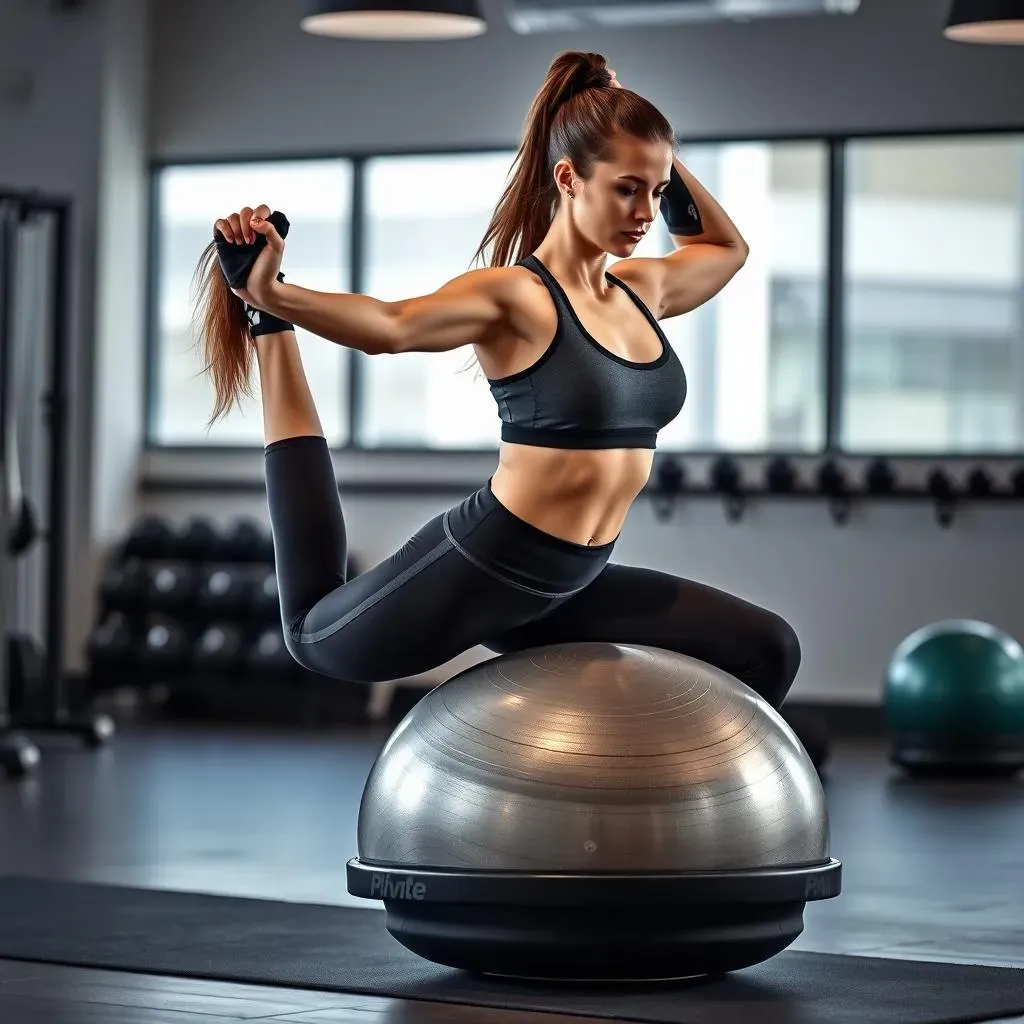Table of Contents
Think Pilates is just about mats and reformers? Think again. While the core principles of control, precision, and flow remain sacred, the gym environment offers a treasure trove of tools to seriously upgrade your standard gym pilates workout. Maybe you've felt your mat routine getting a little stale, or perhaps you’re looking to add some tangible resistance and instability that the floor just doesn't provide. It turns out, those pieces of equipment scattered around the gym floor – yes, even that half-dome thing – can become powerful allies in building strength, improving balance, and deepening your connection to your powerhouse.
Elevate Your Gym Pilates Workout with Common Equipment
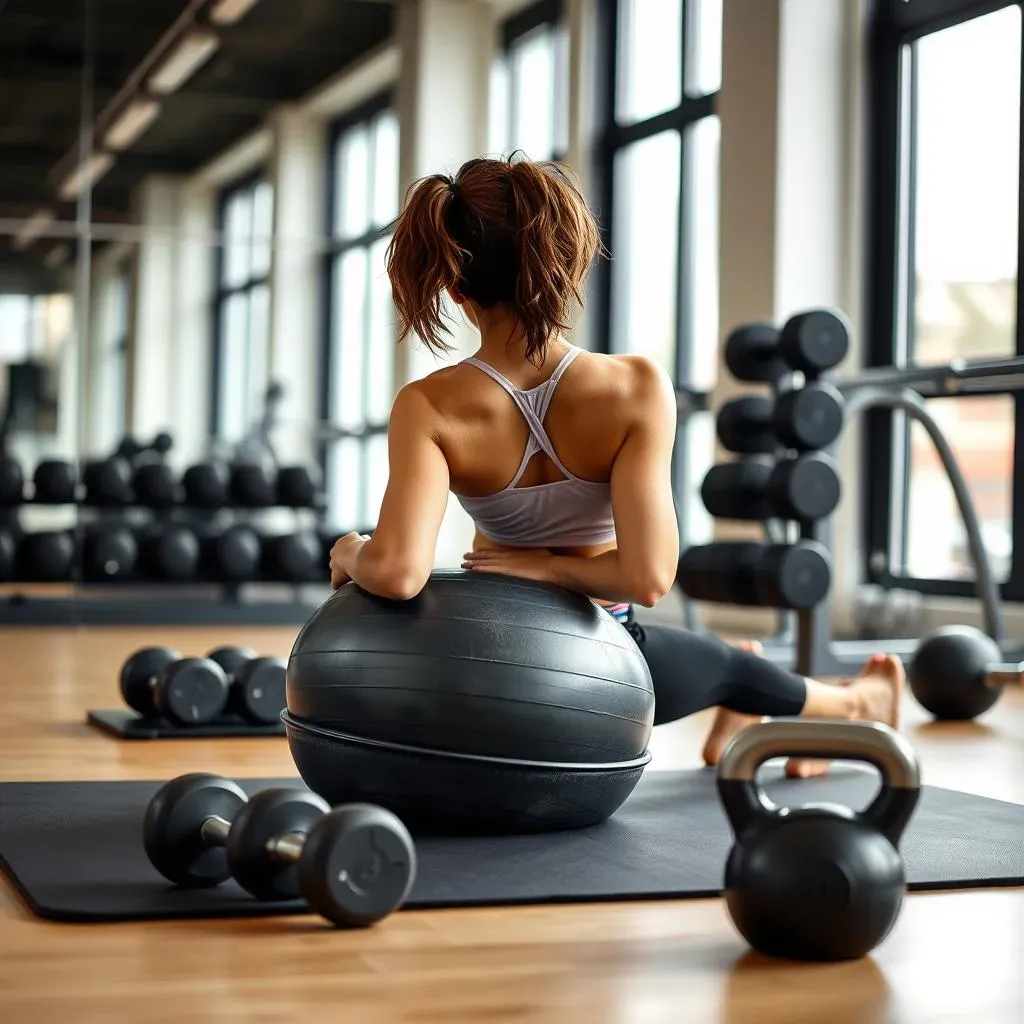
Elevate Your Gym Pilates Workout with Common Equipment
Why Bother with Gym Equipment?
Look, the mat is foundational. It's where you build awareness, find your center, and learn the basics of control. But let's be honest, sticking *only* to the mat for your gym pilates workout can start to feel a bit… flat. Adding external tools isn't about abandoning Joseph Pilates's principles; it's about applying them under different loads and conditions. It forces your body to stabilize against resistance or instability in ways the mat alone can't replicate. Think of it as taking those precise, controlled movements you've honed and putting them to the test in a more dynamic environment.
This isn't about lifting heavy or grinding out reps. It's about using the equipment to challenge your core stability in new planes, to add a precise amount of resistance to strengthen specific muscles, or even to provide a touch of assistance to help you find a deeper connection in a challenging move. It keeps things interesting, prevents plateaus, and frankly, makes your gym pilates workout feel more integrated into the rest of the fitness world buzzing around you.
Common Tools, Uncommon Results
So, what pieces of gym equipment are we talking about? You don't need fancy, specialized gear. We're looking at things you trip over on your way to the water fountain. The half-dome stability ball, usually called a BOSU, is a prime candidate. Dumbbells, the kind stacked neatly in various weights, are another obvious choice. And yes, even those oddly shaped kettlebells gathering dust in the corner can find a purpose in a Pilates context.
Each of these items brings a different challenge. The BOSU messes with your balance, demanding constant adjustments from your core and smaller stabilizing muscles. Weights add straightforward resistance, making your muscles work harder through the controlled range of motion. Kettlebells, with their offset center of gravity, require significant control and stability, especially during dynamic movements. Integrating these tools thoughtfully can transform familiar exercises, offering new pathways to strength and control within your regular gym pilates workout.
- BOSU Ball: For instability and balance challenges.
- Hand Weights: To add resistance or assistance.
- Kettlebells: For dynamic resistance and control demands.
BOSU Ball: A Pilates Prop Substitute in Your Gym
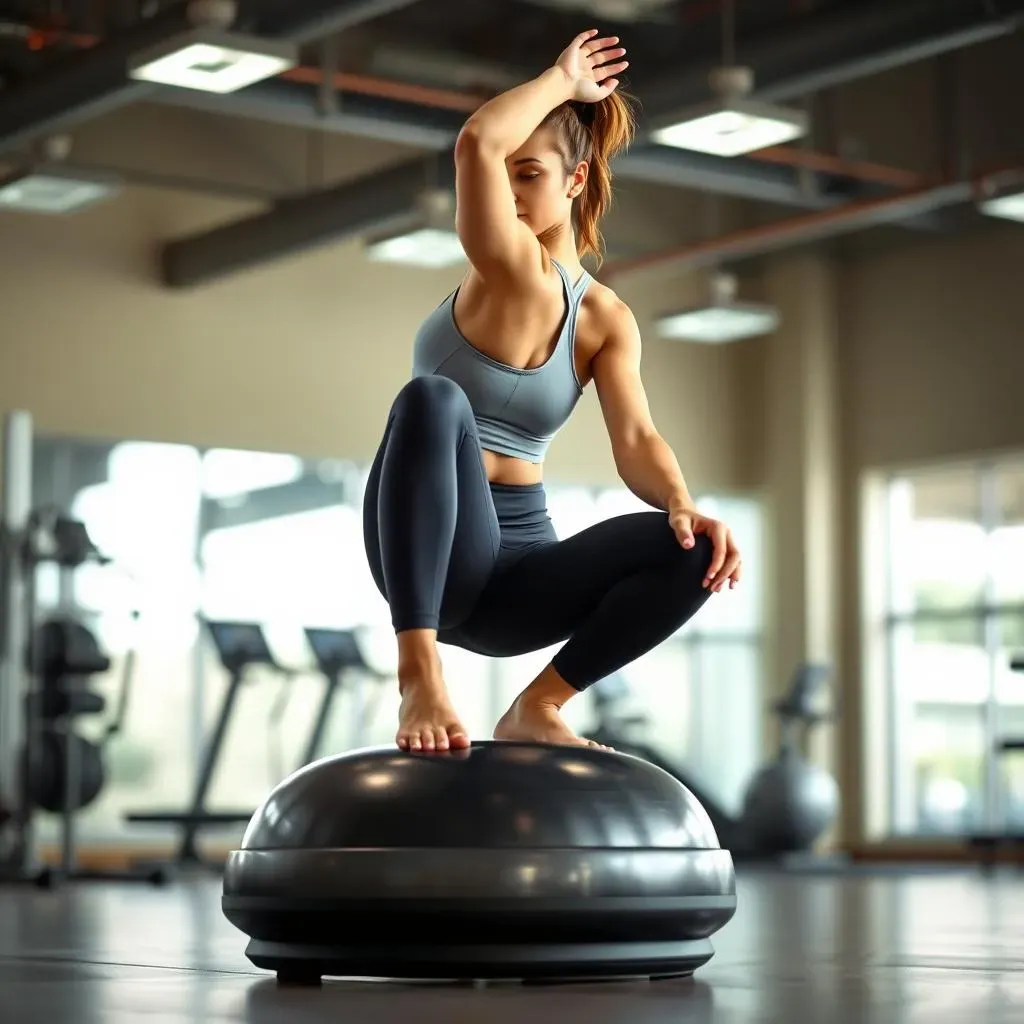
BOSU Ball: A Pilates Prop Substitute in Your Gym
Alright, let's talk about the BOSU. You know the one, the half-dome, half-flat thing that looks like an oversized ant trap. In the Pilates world, we have props like the box or the step barrel to elevate, support, or challenge balance. The BOSU steps into this role beautifully in a gym setting. Its unstable surface forces your body to work harder just to stay still, let alone perform controlled movements. Think of it as a portable challenge to your stability, demanding constant micro-adjustments from your core, hips, and ankles. Using it turns simple mat exercises into dynamic balance and strength challenges, recruiting muscles you didn't even know were slacking off.
- Use the dome side up for seated exercises to challenge balance.
- Flip it flat side up for standing or kneeling work, increasing instability.
- Substitute it for a box in exercises like Short Box Series.
- Incorporate it into plank variations for an extra core burn.
Adding Resistance: Weights and Kettlebells in Pilates Movements
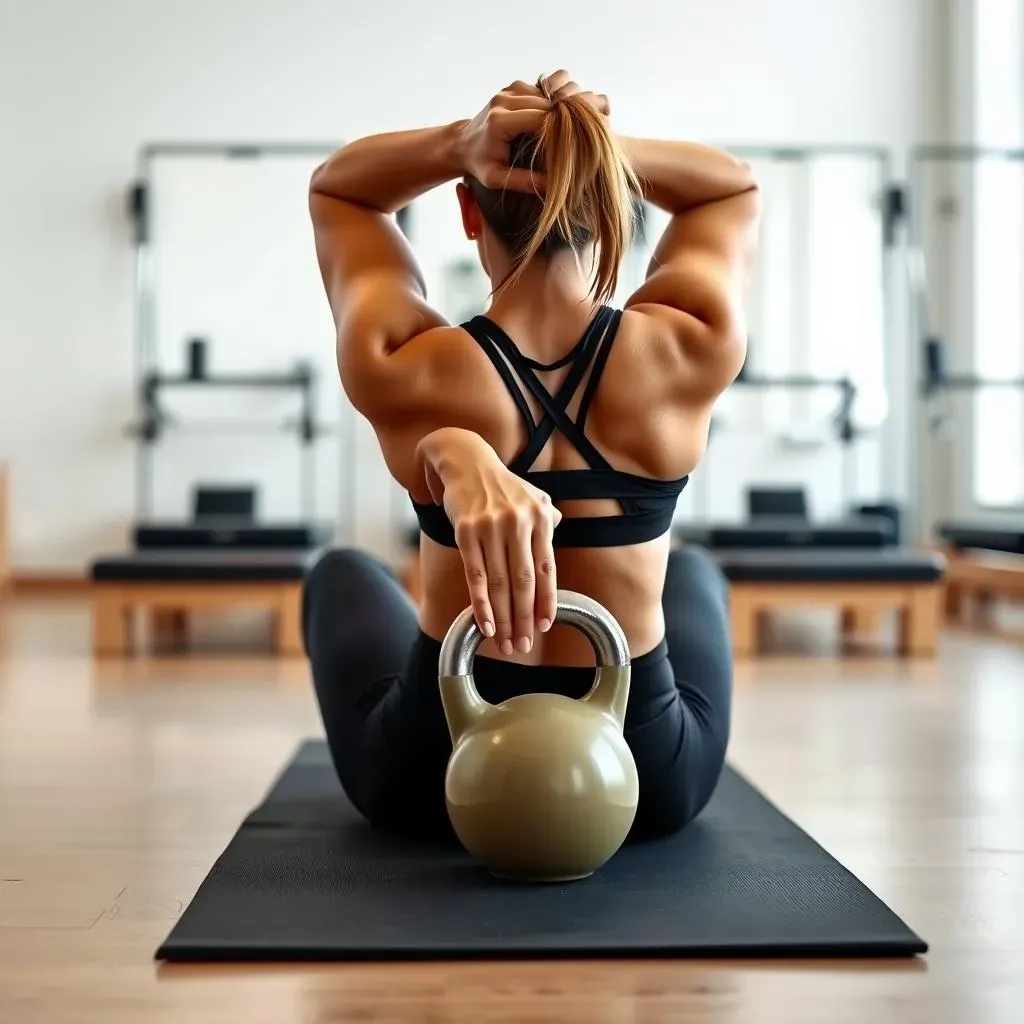
Adding Resistance: Weights and Kettlebells in Pilates Movements
Hand Weights: More Than Just Bicep Curls
so you see dumbbells everywhere in the gym. Usually, they're for lifting heavy things or doing endless reps of isolation exercises. But in a gym pilates workout, hand weights become a different animal entirely. We're not aiming for hypertrophy here; we're using them to add precise resistance that challenges your stability and control *through* the movement. A light weight in your hands during exercises like the Hundred or Roll Up changes the leverage, forcing your core to work harder to maintain form. It's about adding a measured challenge, not just heft. This can highlight imbalances or weaknesses you might not notice on the mat alone.
Specific Applications for Dumbbells
Let's get specific. Holding light weights during the arm series in a seated position on the mat or a BOSU? That adds resistance to the arm movement, yes, but it also significantly ups the ante on keeping your torso stable and upright. Trying a Spine Twist with light weights? Suddenly, that controlled rotation requires more core engagement to prevent the weights from pulling you off-axis. They can even *assist* you. Holding a single light weight during a Roll Up can shift your center of gravity slightly forward, sometimes making it easier to articulate through the spine if you struggle with the initial lift off the mat. It’s about strategic application, not just grabbing the heaviest thing you can manage.
- Use light weights (1-3 lbs) for arm series to challenge torso stability.
- Hold a single weight during Roll Up for potential assistance or added challenge.
- Incorporate weights into Spine Twist or Saw to test rotational control.
- Add weights to exercises like Swan Dive or Single Leg Stretch for resistance.
Kettlebells: The Unstable Challenge
Now, kettlebells. These things look a bit intimidating, right? That handle and offset weight distribution make them inherently less stable than dumbbells. And that's precisely why they can be interesting in a Pilates context. Using a kettlebell forces your body to constantly stabilize against its shifting center of mass, demanding serious control from your core and grip. It's not about swinging it around like you're in a Crossfit class; it's about controlled movements where you manage the bell's momentum and position. Think of a controlled roll down holding a light kettlebell, perhaps adding a slight rotation at the bottom. That off-center weight makes your obliques and deep stabilizers work overtime just to keep things smooth and controlled.
Maximizing Results in Your Gym Pilates Workout
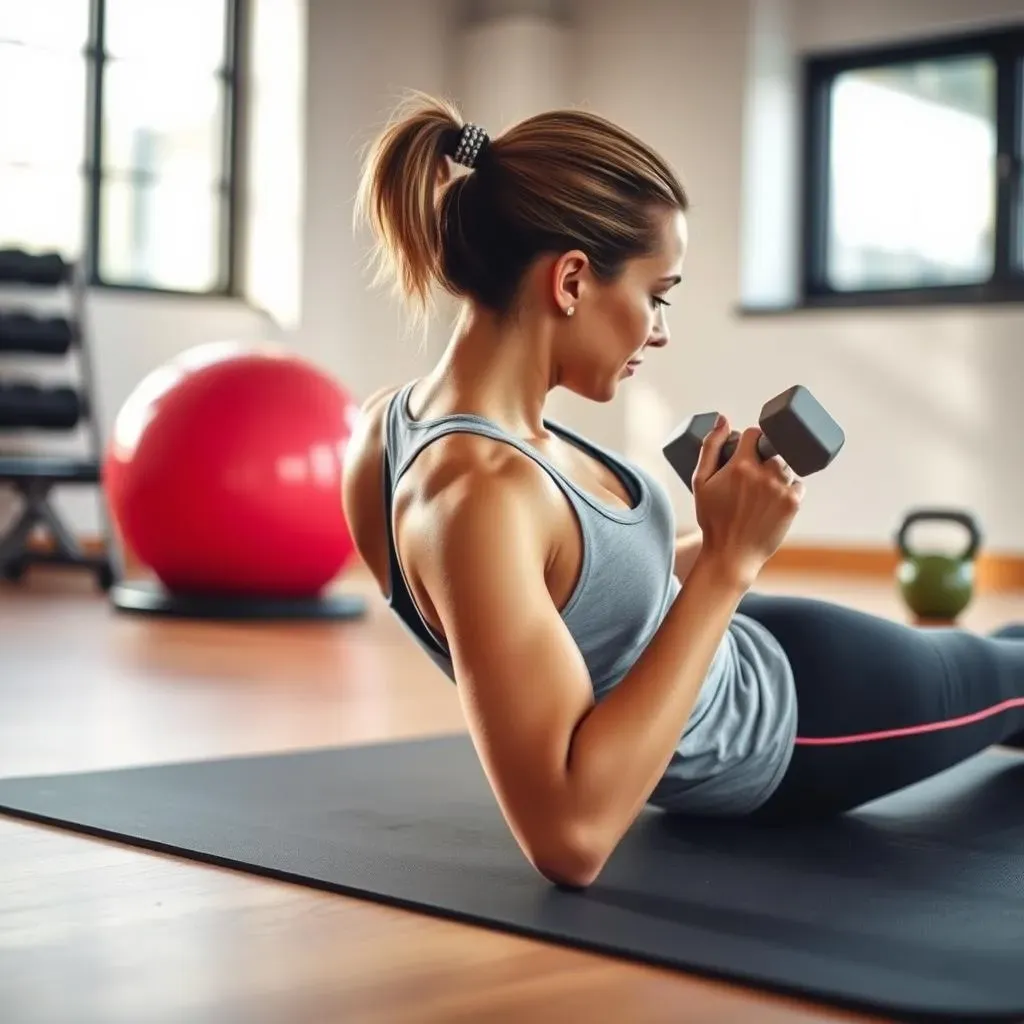
Maximizing Results in Your Gym Pilates Workout
Integrate Mindfully, Don't Just Add On
so you've got the BOSU staring at you, a rack of dumbbells calling your name, and perhaps a lonely kettlebell lurking. The goal isn't to just randomly shove these into your routine. That’s how you get hurt or, worse, get zero benefit. Maximizing results in your gym pilates workout means integrating these tools *mindfully*. Think about the exercise you're doing on the mat – say, a Roll Up. What's the purpose? Spinal articulation, core strength, hamstring stretch. How could a light weight *enhance* that? Maybe it helps you feel the core connection more deeply as you resist its pull, or maybe it helps initiate the movement if you struggle. It's about adding a specific challenge or support that aligns with the exercise's intention, not just making it harder for the sake of it. If adding the equipment breaks your form or compromises your control, ditch it until you're stronger.
It's like cooking; you wouldn't just dump random spices in. You add them to bring out the flavor of the main ingredient. Here, your Pilates movement is the main ingredient, and the equipment is the spice.
Listen to Your Body and Progress Smartly
This isn't a competition to see who can use the heaviest weight or balance on the most unstable surface. Maximizing results in your gym pilates workout hinges on listening intently to your body. That slight tremor when you're on the BOSU during a seated exercise? That's your stabilizers working. Pushing through pain or losing control because you grabbed a weight that's too heavy? That's just asking for trouble. Progression in Pilates, especially with equipment, is about maintaining control and precision as the challenge increases. Maybe you start with bodyweight on the unstable surface, then add a light weight once your balance is solid. Or maybe you increase the range of motion with the weight before increasing the weight itself. It's a layered approach.
Joseph Pilates himself was pretty clear on this. It was about control, not momentum or brute force. Adding equipment provides a new way to test that control under varying conditions.
What does smart progression look like?
- Master the mat exercise first.
- Introduce the equipment at a low intensity (e.g., stable side of BOSU, lightest weight).
- Maintain perfect form as you increase instability or resistance.
- Listen for feedback – are you feeling it in the right muscles?
- Rest when needed; recovery is part of getting stronger.
Consistency and Complementary Work
Getting better at your gym pilates workout, especially when incorporating equipment, requires showing up consistently. Sporadic sessions won't build the foundational strength and body awareness needed to safely and effectively use tools like kettlebells or BOSUs. Aim for 2-3 sessions per week, ideally mixing in some pure mat work to keep you grounded in the core principles. Think of the equipment work as enhancing your mat practice, not replacing it entirely. The stability you build on the mat makes you stronger on the BOSU; the resistance you add with weights makes your bodyweight exercises feel more controlled.
Consider how the equipment work complements other activities too. Improved balance from BOSU work carries over to everyday life and other sports. The core control honed with kettlebells protects your back during lifting. It's all connected. Don't just do a few reps with the equipment and call it a day; integrate it into a structured workout that builds on your existing Pilates foundation. That's how you truly maximize those results.
Beyond the Mat: Elevating Your Practice
So, there you have it. Your gym isn't just a place for treadmills and free weights; it's a potential playground for enhancing your Pilates practice. By thoughtfully incorporating tools like the BOSU, hand weights, and even kettlebells, you introduce layers of instability, resistance, and proprioceptive challenge that a simple mat workout often lacks. This isn't about replacing traditional Pilates, but rather augmenting it, demanding greater control and adaptability from your body. The equipment is there, often underutilized for anything but the usual suspects. Consider this your permission to experiment, to push beyond the familiar, and frankly, to stop being bored. The results, in terms of strength, balance, and a more dynamic workout, tend to speak for themselves.
